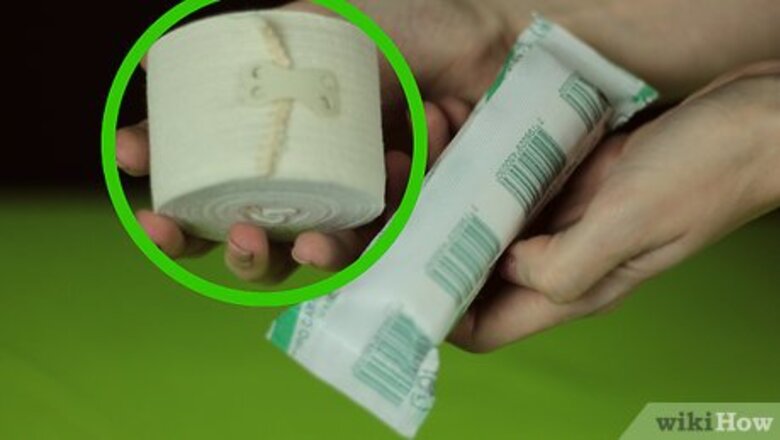
views
Wrapping Your Knee
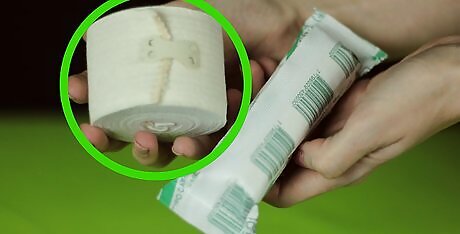
Gather supplies. You need to have the right materials to wrap your knee. You need to buy a knee wrap, also called a compression bandage. These can be bought at any general store or pharmacy. The most popular brand is ACE, but you can also find other brands to buy as well. You also need something to hold the bandage on with. Most bandages come with elastic clasps with metal hooks, but in case your bandage doesn't, you can tuck the bandage into itself. You can also buy self-sticking bandages, which use adhesive on their surface to stay snug. Others have velcro along the edge of the wrap. Choose whichever one you think is best for your situation. You can also buy different sizes of bandages as well. Buy the size that you feel will fit your knee best.
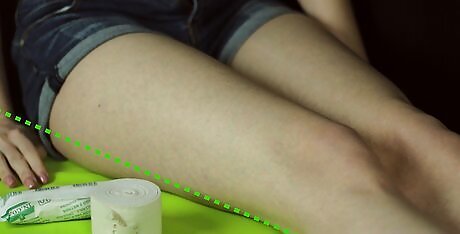
Position yourself. When wrapping your knee, you need to make sure you are in the correct position. First, have a seat in an open area where you have plenty of room to move around. Next, extend your right leg out in front of you. There should be plenty of extension in your leg, but it should also be relaxed, with just a bit of passive comfortable flexing in your knee. Make sure there is enough room to move your arms around your leg. This will ensure that you have room to work on your knee.
Start wrapping your knee. When you start, hold the bandage in your hand. Make sure it starts out rolled up. This will make it easier as you wrap it around your knee. Position your hand with the wrap in it about two inches below your knee joint. Take the loose end of the bandage and place it just under the joint with your hand. Hold it there with that hand while your other hand moves the bandage around your knee. Wrap it all the way around once until the wrap comes around to meet the loose end. Pull it snug to secure it. When you start wrapping, start below the knee then start wrapping up towards the thigh and heart. You should wrap upwards because otherwise, you're squeezing the fluid down and not helping the fluid get back to the heart. Make sure to wrap over the end you started with and put a twist (or two, so that the roll returns to its original position) in the bandage directly above the end to hold it in place. Hold the roll so that the flat side without the roll bundle is against your leg. It will be annoying to wrap it the other way. If you're not sure which way is correct, unroll the bandage on a table. If it unravels, that's the right way. If not, turn it over. The wrap should be level as you start to go around your knee.
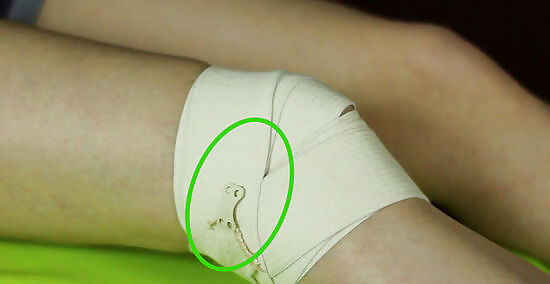
Finish wrapping your knee. As you move the wrap around your knee, keep it just snug and work your way up your leg from below the joint. Work your way around the joint, leaving about one finger breadth of space between the bandage and your kneecap. Continue until you have completely wrapped your knee joint. Add one more twist of the bandage at the topSecure the end with whatever fastener the bandage has, such as velcro, adhesive, or fasteners. If you want to cover your knee cap with the bandage, loosen the tightness of the bandage around the kneecap to avoid excessive pressure on the joint. The strength of the wrap should be snug above and below the kneecap. The wrap should extend from approximately two inches below the joint and two inches above the joint. The joint itself is about one and a half inches, so the total area of your leg that should be wrapped is approximately five to six inches. If you don't have any sort of fasteners, you can tuck the last few inches of the bandages under the twists.
Make sure it isn't too snug. You need to be careful with the amount of pressure you wrap your knee with. The bandage should be snug but not too snug. To check how snug it is, place your index finger underneath the bandage. You should be able to fit your index finger in between the wrap and your skin. The bandage should feel supportive because it provides additional stability, not as if it might cut off your circulation. If you wrap you knee too tight, it turns into a tourniquet which will prevent good blood flow and impede your healing. If it is too tight and you can't fit your finger in between the bandage and your leg, rewrap your leg with a looser hold. Even if you can get a finger under the wrap, check for signs of circulation loss. If the bandage is leaving an indent or mark in your skin, loosen it. If your toes or lower leg start to go numb, it also needs to be loosened. Repeat the procedure on the opposite leg if needed, following the same method.
Understanding The Reasons to Wrap Your Knee
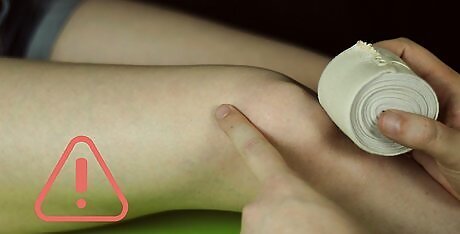
Decide if you need to wrap your knee. There are multiple reasons to wear a knee wrap. Many people who exercise will wrap their knees as a means of giving their knees a bit of additional support while they exercise. Some people do it if they have had a partial tear in a ligament and are seeking some external support. Weight lifters will also wrap their knees prior to doing squats to give the joint some additional stability. If you have or think you have sustained an injury, make sure your see your doctor before performing any strenuous activity.
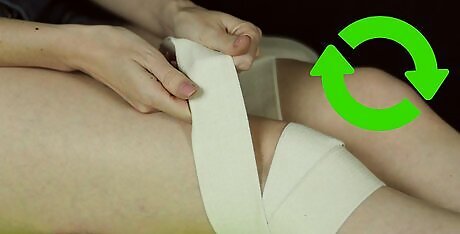
Use a wrap as a preventative measure. Knee wraps are not generally used to treat a severe injury or condition. Knee wraps are used for the prevention of injury or knee issues. They provide a bit more stability and external support to the joint of your knee when it is put under extreme stress. The only kind of treatments a knee wrap is used for are first degree sprains of the knee. This can only be diagnosed by a healthcare provider. If you sustain any injury, see your orthopedic surgeon. The risk of getting injured again or misdiagnosing can cause serious damage.
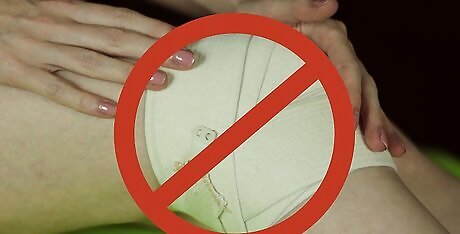
Avoid using knee wraps on serious injuries. There are many instances where a wrap is not needed. If you have an anterior cruciate ligament (ACL) tear or any other ligament tear, do not treat it with a knee wrap unless explicitly instructed by your orthopedic surgeon. It would also not be appropriate to simply wrap your knee with a medial or lateral meniscus tear. If a knee wrap helps an injury and your surgeon sees no problem with using this method while you wait for an upcoming surgical repair, then you can use it. Never use this as a means to stabilize a grossly unstable joint for purposes for recreation.
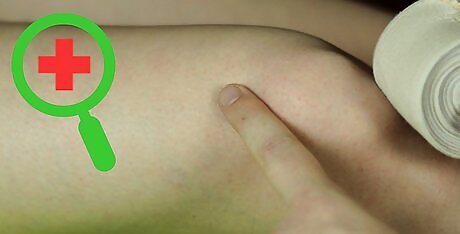
See a doctor. If you feel that, despite wrapping your knee, you have been injured, see your physician right away. Only the doctor can diagnose exactly what is wrong with your knee. The doctor may advise you to wrap your knee injury if it is a grade I injury for purposes of stabilization only. If your wish to start or resume physical activity, seek medical attention first to see if your injury has healed.
















Comments
0 comment